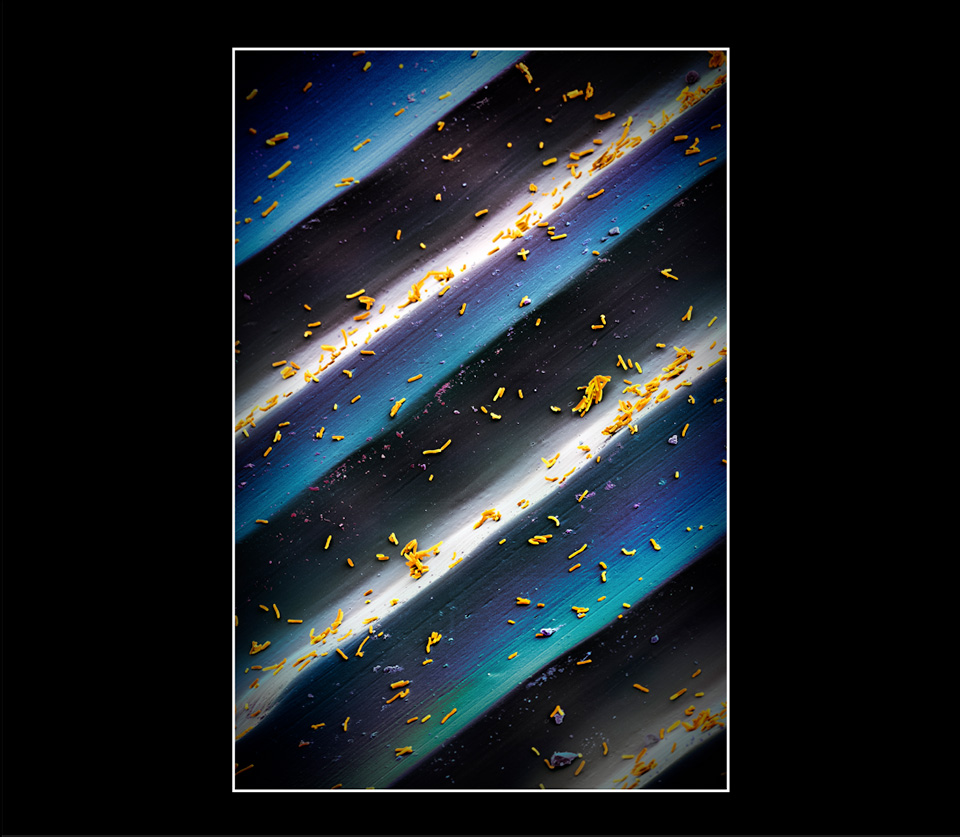
Martin Oeggerli, F. Schmidt, M. Cherepkova, and R. J. Platt
Escherichia coli on a Phonographic Record of Ludwig van Beethoven’s “Moonlight Sonata” (Piano Sonata No. 14 in C-Sharp Minor), 2018
Colored scanning electron photomicrograph
Colorized with image processing software
Pathology, University Hospital of Basel, and University of Basel, Biosystems Science and Engineering
Basel, Switzerland
This colorized scanning electron micrograph shows cells of the human gut bacterium Escherichia coli (E. coli) plated onto a phonographic record of Ludwig van Beethoven’s “Moonlight Sonata” (Piano Sonata No. 14 in C-sharp minor).
E. coli has been engineered to express the molecular components of another bacterium’s CRISPR-Cas system, an adaptive bacterial immune system that enables the cell to write a permanent record of the RNAs within the cell into its own genome where it is safely stored. Much like the Beethoven composition, this record is preserved over many generations. Scientists can retrieve it at any time to reveal the mysteries of the bacterium’s transcriptional history.
